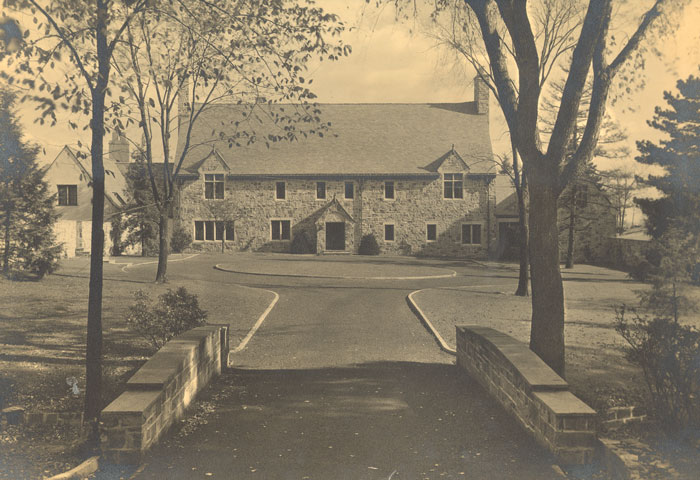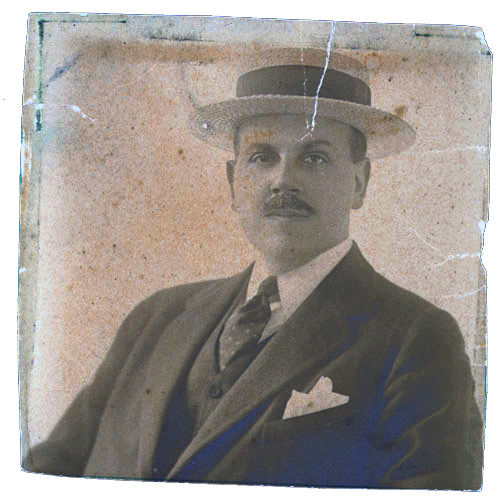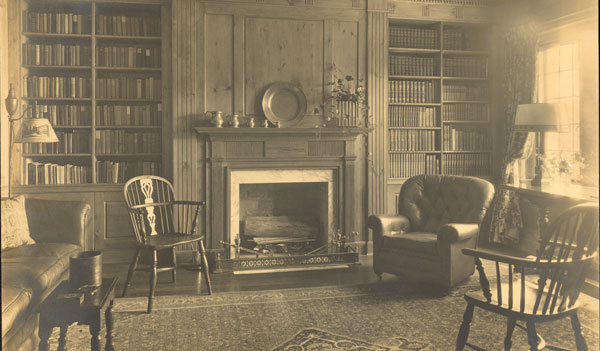Penlyn
A “Cliff Notes” Story
March 2000
When it was first created in 1900, the Palisades Interstate Park Commission concentrated on acquiring the Hudson shorefront and the face of the Palisades in New Jersey. Most of the top of the Palisades stayed in private hands, including more than a dozen large cliff-top estates. In the early 1930s, John D. Rockefeller Jr. acquired much of this land and donated it to the Commission in 1933, but with two stipulations. First, a “scenic parkway” was to be built along the cliff top from the new George Washington Bridge to Bear Mountain, New York. Second, the top of the Palisades was to be returned to its native appearance, with no man-made structures visible from the river. The estates, in other words, with their spacious stone manor houses, tennis courts, greenhouses, and so forth, would have to go.
As the work of demolition began, the Commission set out to acquire the rest of the cliff-top properties. This included a graceful nine-and-a-half-acre estate built in the late 1920s for Henry Herbert Oltman, a New York City stockbroker, who had named it “Penlyn,” which the Commission acquired in 1939. Because Penlyn had been built in a natural hollow on the cliffs, more or less hidden from the river, it was left standing, and in 1956 it became our Headquarters.
In almost half a century since, the story of Penlyn had gotten considerably distorted. A history of Alpine published in 1976 managed to rename it “Shadowlands” (the author apparently confused it with the name of a realty company that once owned the property). Worse, a tale appeared among our own staff that had the Oltmans building the house at the end of the 20s (that much was true), but then losing their fortune in the crash of 1929, so they never got to live in it (wholly untrue). It has been our good fortune, then, to be able to meet recently with Mrs. Margaret (Oltman) Dean, to share her recollections of a decade or more growing up at Penlyn.

Mrs. Dean is now a lively 77 years old, living in Venice, Florida, with her husband Loomis Dean, who was a celebrated Life photographer (over fifty covers to his credit) and, before that, a publicist for the Ringling Brothers’ Circus. They met in Paris, where Margaret worked as a journalist for Reuters. Both are marvelous storytellers.

The Oltman family began coming to the Palisades as a summer retreat in the 1920s, staying in several large cottages north of where the manor house would be built (stone walls still mark the site of the cottages). Sometime around 1928 — Margaret was five or six at the time — her father decided to make Alpine their year-round residence. A Yale graduate (he and a classmate had adopted the bulldog, “Handsome Dan,” who would become the school’s famous mascot), he’d inherited a seat on the Stock Exchange from his father, John, who died in 1900.
Living at Penlyn were Henry Herbert (Bert) and Mrs. Jessie Oltman (for both, it was a second marriage), Jessie’s daughter from her previous marriage, also named Jessie, and Margaret, the youngest. The master bedroom was what is now our second-floor main administrative office, with our superintendent’s office Mrs. Oltman’s dressing room (its washroom still has the original pink marble tiling and brass fixtures). Margaret’s bedroom (now our accounting office) was initially next door to the master bedroom, while her stepsister Jessie’s was upstairs, in what became our engineering office. A close family friend, a widow, lived in an apartment on the top floor of the house, now our police locker room. Also sharing the house, in the north wing (where Cliff Notes gets typed up these days) were a butler (a Frenchman named August, temperamental and “prone to tantrums”), maids, and a cook. In the stone cottage that is still southwest of the house lived the estate’s superintendent and his wife and daughter, while the chauffeur was above the attached garage. And “dogs — everywhere dogs.” (Some may remember a small building next to the superintendent’s cottage, which the Park Commission used as a garage until it tore it down a couple of years ago: here were the kennels.)
Mr. Oltman was driven to the ferry in Weehawken to get to Wall Street each day, dropping Margaret off at the Dwight School in Englewood on school days (she was surprised to hear that the school is now coed). If she did well at her lessons, she was allowed to go to the skating rink at Bear Mountain on weekends, and she became a proficient skater, later giving lessons at Rockefeller Center. One of her students was a young Jacqueline Bouvier — perhaps not so surprising, as Jacqueline’s father was a close friend of Margaret’s father.
Bert Oltman — by all accounts (not just his daughter’s!) he was a gregarious, generous man — enjoyed entertaining, and the house hosted frequent parties, with guests staying over in several spare bedrooms (now conference rooms). The dining room, kitchen, and butler’s pantry were where our police department is now, while our courtroom was their drawing room, its wood-panel closets storing music for the piano. Her stepsister married in the drawing room, taking up house for a time in one of the cottages. Margaret in turn took over the upstairs bedroom. Today she chuckles as she recalls lowering a basket on a rope to tap it against the kitchen window, so the cook might slip in a snack. She was surprised to learn that a childishly cute mural her sister once painted on her bedroom wall is still there. (When we told her we’d found it by popping a tile from the drop ceiling and climbing through, just to see what was up there, she raised an eyebrow and remarked, “You are curious, aren’t you…?”)
Her mother’s passion was the gardens south of the house (a foundation from a fountain is still there). There was a flower cutting room adjoining the solarium at that end of the house, and a gardener was of course part of the staff. As was a beloved Swedish governess, who always managed to survive Mrs. Oltman’s occasional impulsive firings of the estate’s staff. If Margaret were particularly good, she might be allowed to spend a weekend at “Hig’s” Brooklyn apartment. Other memories include just exploring around Penlyn, climbing down the steep slopes (the kind of childhood adventures we remember almost sheepishly — yet with a bit of awe, too — as adults), or just watching the ferry come and go from Yonkers, from high above. It must have been a charming — and charmed — place to grow up.

The days of the cliff-top estates were fleeting. Bert Oltman, having survived the crash, met a financial reversal ten years later, in September of 1939 (along with Jessie’s mural, we found some crumbling newspapers from that month in the attic), and though his fortunes later recovered, the family had to give up Penlyn. He died after a stroke in 1946. By then Margaret was in Paris, at the start of her career. She married Loomis in Alpine, during a stateside visit to a cousin still living here.*
Otherwise Peggy’s not seen very much of her old town in her adult years. She has a ready sense of humor, and so can manage a smile when told that the family’s downstairs library is today being converted into public restrooms.
But we sense she’d prefer not to see it…

– Eric Nelsen –
*The cousin was Joseph R. Ellicott, who was a popular mayor of Alpine from 1963 to 1970, and who lived until his death in the spring of 2003 on Closter Dock Road in Alpine, in the same home since 1958, where he raised his family. Peggy and Joe remained close throughout their lives, even though she lived most of her adult life in Paris, and later, Florida. Our thanks to Ellicott’s daughter Judy Ellicott Rader for this information.

